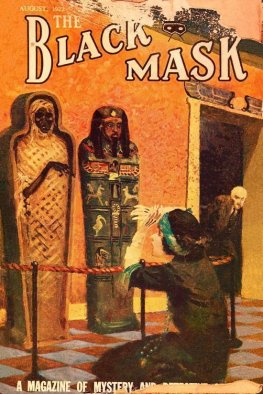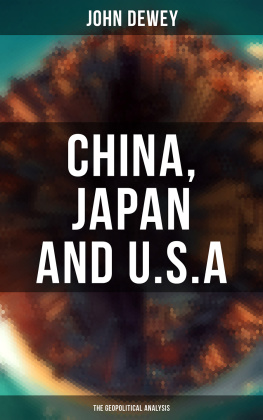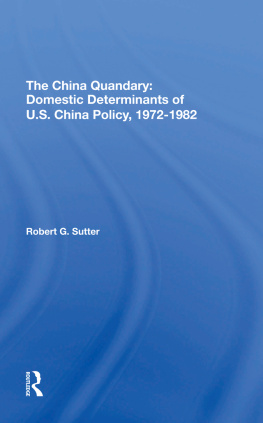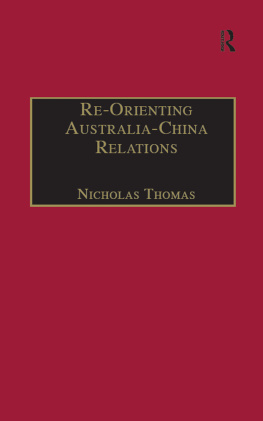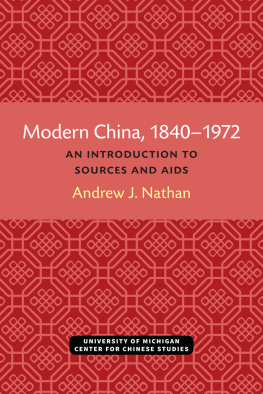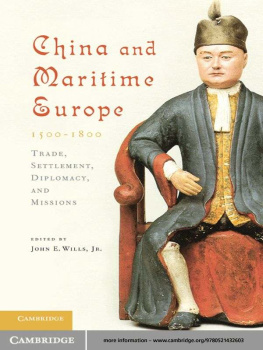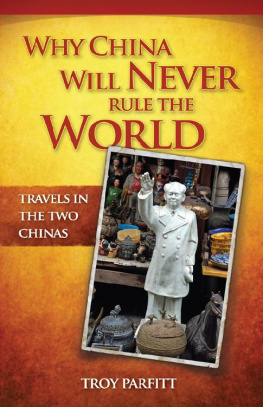ROUTLEDGE LIBRARY EDITIONS:
HISTORY OF CHINA
Volume 11
THE WORLD AND CHINA,
19221972
THE WORLD AND CHINA,
19221972
JOHN GITTINGS
First published in 1974 by Eyre Methuen Limited
This edition first published in 2019
by Routledge
2 Park Square, Milton Park, Abingdon, Oxon OX14 4RN
and by Routledge
711 Third Avenue, New York, NY 10017
Routledge is an imprint of the Taylor & Francis Group, an informa business
1974 John Gittings
All rights reserved. No part of this book may be reprinted or reproduced or utilised in any form or by any electronic, mechanical, or other means, now known or hereafter invented, including photocopying and recording, or in any information storage or retrieval system, without permission in writing from the publishers.
Trademark notice: Product or corporate names may be trademarks or registered trademarks, and are used only for identification and explanation without intent to infringe.
British Library Cataloguing in Publication Data
A catalogue record for this book is available from the British Library
ISBN: 978-1-138-48273-9 (Set)
ISBN: 978-0-429-45536-0 (Set) (ebk)
ISBN: 978-1-138-57944-6 (Volume 11) (hbk)
ISBN: 978-0-429-46398-3 (Volume 11) (ebk)
Publishers Note
The publisher has gone to great lengths to ensure the quality of this reprint but points out that some imperfections in the original copies may be apparent.
Disclaimer
The publisher has made every effort to trace copyright holders and would welcome correspondence from those they have been unable to trace.
The World and China,
19221972
JOHN GITTINGS
EYRE METHUEN
LONDON
CONTENTS
First published in 1974
by Eyre Methuen Limited,
11 New Fetter Lane, London, EC4P 4EE
Copyright 1974 John Gittings
Printed in Great Britain by
Ebenezer Baylis & Son Ltd
The Trinity Press, Worcester, and London
ISBN 0 413 27410 1
This is a history of the ideas behind Chinese foreign policy, and to a large extent these have been and still are the ideas of Mao Tse-tung. The story begins in the 1920s when Chinese revolutionaries, including Mao, puzzled over the connection between imperialism abroad and revolution at home. It ends in the 1970s, when China has long since made its revolution, but still faces immense problems of a theoretical as well as a practical kind in dealing with the external powers. The visit of President Nixon to Peking in February 1972 was not an end to Chinas long search for international security, but only the beginning of another of the many efforts which it has made in that direction.
It is sometimes said that the Chinese communists had little interest in or knowledge of the outside world until they achieved victory in 1949. They had simply followed the Soviet line as, it is argued, they continued to do for several years after setting up the Peoples Republic. This is far from the truth. Chinese nationalists of every political colour were intensely concerned with the international situation during and between the two world wars, by necessity as much as by choice. Most politically articulate Chinese were making their revolution with the living lesson of imperialism before their eyes, in the Treaty Ports, on the railway lines, among the foreign enterprises which dominated Chinese industry and commerce. And the course of that revolution was on many occasions directly affected by fresh twists and turns on the international scene. To list just a few during the twelve years preceding the Liberation of 1949 there was Japans aggression against China, the outbreak of the European war, the Soviet Pacts with Germany and later Japan, Pearl Harbour, American and later Soviet intervention in China, American occupation of Japan, Soviet discouragement of the Chinese revolution, the US -sponsored return of the colonial powers to Southeast Asia, the formation of the cold-war power blocs
If the Chinese had been so traditionally sinocentric as to ignore the kaleidoscopically changing world around them, they would have simply lost the revolution. On the contrary, their abundant writings on the subject show that Mao and his colleagues were acutely aware of the need to relate their internal revolution to the world scene which, in spite of their geographical isolation for most of the revolutionary period, they followed with avid attention. Furthermore they regarded the international aspect of their situation, that is, Chinas contradiction with imperialism, as the decisive contradiction to which all others were subordinate. And while they tried to avoid open disagreement with the Soviet line, on several important issues there were vital differences. Generally speaking, the Chinese worked out their own analyses of international affairs, using their own language and their own China-oriented terms of reference.*
Mao Tse-tung brought to this task of analysing the outside world and its impact upon China the same qualities of insight and decisiveness which he showed in grappling with Chinese society at home. As early as 1928, alone among his colleagues, he cut through the general denunciations of imperialism in China, grasped what he saw to be its essential characteristic that it assumed a semi-colonial form and drew from it a significant theoretical principle. China was better, not worse, off because it was oppressed by many foreign powers rather than dominated by just one. For the rivalries between the powers, and the domestic contradictions which were thereby heightened within Chinas own ruling class, only created more fertile ground for the revolution. All that was required was for the revolutionary forces to make an accurate assessment of the relative balance of these external and internal contradictions, and to take advantage of those elements with whom the revolution had some temporary common ground in order to oppose the principal enemy.
The theory was simple but it called for clarity of analysis unobscured by generalized dogmas of the kind which came too frequently from Moscow. As I show in chapters 2 and 3, Maos theory of semi-colonialism was the starting-point for all the most important strategic concepts of the Chinese revolution. In seeking to apply it Mao met with considerable opposition in the 1930s, but during the anti-Japanese war it was central to the Chinese view of the world (chapters 4 and 5). The flexibility of tactics which it implied led Mao, early in 1945, to seek in effect to win American rather than Soviet backing for his cause. Four years later it led him to lean instead unequivocally to the side of the Soviet Union, negotiating an alliance (under considerable difficulty) with Stalin. Two decades later the same principle that of distinguishing between the principal and the subordinate contradictions facing China would be invoked to justify inviting Mr Nixon to Peking.
A second distinctive aspect of Maos view of the world, which is also central to Chinese policy in the 1970s, emerged during the critical years of 19467, when the Chinese communists fought their civil war alone against the Nationalist armies. American neutrality was no longer on the cards; American mediation, backed by considerable military aid, discriminated heavily in favour of Chiang Kai-shek (chapter 6). Stalin advised the Chinese communists to avoid war, fearful that it might disturb the equilibrium between the two post-war power blocs. From his Yenan cave Mao advanced an analysis of the international situation which emphasized not the struggle between the United States and the Soviet Union but rather the revolutionary battlefield of the world which lay between the two great powers-the intermediate zone which included China and its own revolution. While compromise might be required between Washington and Moscow, those fighting against imperialism and for revolution in the intermediate countries were not obliged to follow suit (chapter 7). An expanded version of this theory would be argued again from 1958 onwards to show that the Soviet quest for East-West dtente between the great powers was not only irrelevant but harmful to the struggles for national liberation. By the late 1960s the two superpowers would be seen as colluding yet at the same time contending to impose their will on the rest of the world the intermediate zone in its widest sense.





